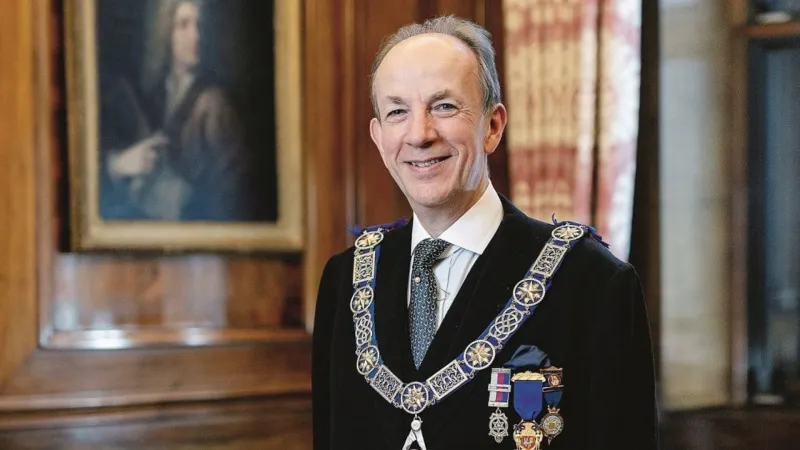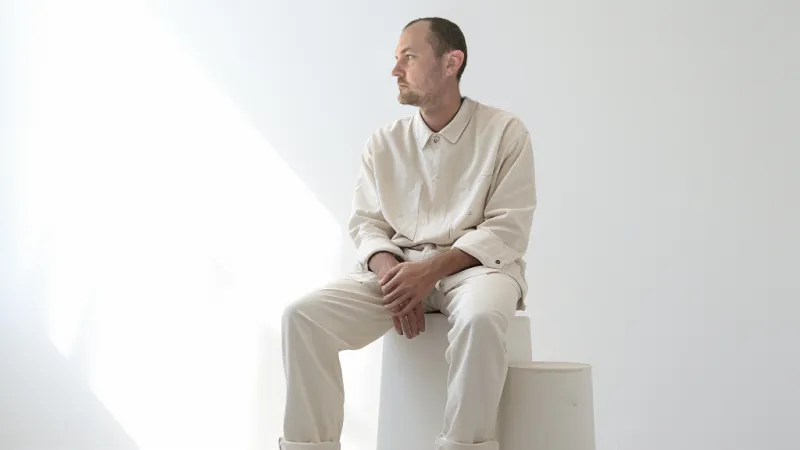
Friday 2 September 2022 marks the 200th Anniversary of the Visit to Newcastle by the Duke of Sussex, Grand Master of the United Grand Lodge of England to lay the Foundation Stone of the new Library of the Literary and Philosophical Society. As far can be ascertained, it is the only visit to Newcastle by a Grand Master whilst in Office.
By 1814, just after the Act of Union between the rival ‘Antient’ and ‘Modern’ Grand Lodges, and the establishment of Newcastle upon Tyne Lodge No 26/24, the town was on the verge of a peaceful revolution – a cultural revolution – and one in which the local Freemasons were to play a major part, thus gaining widespread and a final social and civic acceptance.
The election and appointment of members of the Royal Family to important positions within the Masonic hierarchy was an important element in convincing doubters that the Order was respectable and law-abiding. The presence of Royalty at Masonic events attracted the nobility and the gentry and the curious crowds of the general public; this was evidence that Freemasonry supported the Crown and did not seek to incite rebellion as was the case of similar groups on the Continent of Europe.
In Northumberland, Freemasonry followed a similar pattern in that a member of the landed gentry was usually approached and invited to act as a figurehead of the Order, with the resultant consequence that local worthies were often eager to become members of the Fraternity.
Thus, for the ‘ Antients’, until the Act of Union, there were several Grand Patrons of the Order, such as Lord Delaval, and the ‘Moderns’ were led by the likes of Sir Matthew White Ridley, John Errington, and Sir John Swinburne. Those eminent leaders were expected to possess qualities of leadership and sound judgement. (John Errington, perhaps being the exception!)
Sir John Swinburne of Capheaton was a key instigator in the founding of the Literary and Philosophical Society of Newcastle, and was, during his life, keenly interested in local history and antiquities. He was a Fellow of the Royal Society, A Fellow of the Society of Antiquaries (Newcastle and London), and a member of the Royal Society of Literature.
2 September, 1822 was a great day for the town of Newcastle. For on that day the town was to be honoured by by visit from the Duke of Sussex, the Grand Master of the United Grand Lodge of England; and the main purpose of his visit was to lay the Foundation Stone for the new premises of the Literary and Philosophical Society.
The imminent approach of Royalty stirred the people of Newcastle into a passion of great excitement and enthusiasm, no doubt heightened by the announcement that a High Holiday would be granted in honour of the Visit. The warranted Masonic Lodges of Northumberland, but more particularly those of Newcastle, resolved to receive the Royal Visitor with full Masonic honours. Fraternal letters flew hither and thither, banquets were arranged, and an elaborate Order of Proceedings drawn up, tickets were printed and strict instructions as to dress were issued. The Brethren were to be all in black, wearing their Aprons and white gloves; for the intention was that the Provincial Grand Lodge of Northumberland, should surpass, if not equal the Supreme Grand Lodge of England.
The Town Corporation, with the approval of the Mayor, contributed to the affair, by erecting barriers, rails, hanging flags and bunting from every possible window or post.
Local songs and poems – some of a weird and wonderful nature – were published and circulated:
The beauteous orb of light rose,
And spread the curtain of the sky,
When science woke from soft repose,
To friendship, love and Masonry!
Ye kindred powers! United shine,
To ages yet unborn be shown-
Great Sussex has now crossed the Tyne,
And laid the temple’s corner-stone.
When the carriage containing the Duke arrived, a Royal Salute was fired from the guns of the Castle, and the bells of St. Nicholas’ Church pealed out and thousands of people were present to welcome the Duke. At one point, the crowds were so dense that the Constables had to make ‘a hearty use’ of their staves to clear a path.
At the Mansion House, the Duke was officially welcomed to the town by an Address delivered by the Town Clerk, ‘in a very energetic manner’, to which the Duke made a somewhat incoherent reply. The Major commanding the town garrison, upon being presented to the Duke, stated that he regretted that he was unable to provide a guard of honour. Whence this inability proceeded from was unclear.
After this promising start, the Grand Master caused himself ‘to be equipped with all his Masonic Badges’ and stood on the steps of the Mansion House, while a thousand Brethren passed before him, bearing all the insignia of the Fraternity; banners, silver cups containing corn, wine, and oil, silver trowels, and setting mauls, a golden square, levels, compasses and a plumb rule. There was also a Book of Constitutions born on a cushion, along with the Great Seal and a Bible.
A thousand Brethren? Even allowing for a pardonable exaggeration; the numbers could well have been easily made up by members from the following Masonic bodies which formed the procession:
1. Royal Arch Chapter De Swinburne.
2. Newcastle upon Tyne Lodge No. 26.
3. The Gateshead Chapter of Union.
4. The Gateshead Union Lodge No.41.
5. The Lodge of Industry, Swalwell, No.64.
6. St. John’s Lodge, Sunderland No.118.
7. Phoenix Lodge, Sunderland No. 146.
8. Peace and Unity Lodge, Morpeth, No.177.
9. Granby Lodge, Durham, No. 204.
10. Lodge of Harmony, Carlisle, No. 344.
11. Northumberland Lodge, Alnwick, N0.433.
12. St. Hild’s Lodge, South Shields, No. 440.
13. Chapter of Emulation, North Shields.
14. St. George’s Lodge, North Shields, No. 534.
The Grand Master was then taken to the site of the proposed new building, where, despite the immense crowds, he was able to conduct the ceremony of laying the Foundation Stone in due form. After a severe struggle to reach his carriage, the Grand Master then passed through the crowds, to the Turk’s Head Inn, where a Lodge was then opened. There was to be a banquet, later that afternoon, at the Assembly Rooms, and the Duke had requested that ‘any gentlemen’ be allowed to attend. This banquet started at 5 o’clock, and included turtles, venison, and grouse.

There was quite an extensive Toast List, which started with ‘The King’, then ‘The Royal Family’, ‘The Duke of York and the Army’ and ‘The Duke of Clarence and the Navy’. Then the Toast to the Duke of Sussex was proposed.
The good Duke had the somewhat hazy notion that he had a way with words: he had, but they were the wrong words, as he had wonderful notions of grammar and syntax, as was shown in his reply to the Toast:
'In a company like this, I am aware that it would be extremely improper to go beyond certain lengths, but there are sentiments which must be congenial to the feelings of everyone, and I should be extremely sorry of anything that should disturb the harmony or to shock the good sense of this company'.
In a very short time, the Duke’s speech became even more confusing:
'All I say is, that I am proud to be a member of the Royal Family denominated the House of Brunswick. I say denominated, because it is to this Country that we are indebted for the title and rank in society… I am therefore not unlikely to be a friend and supporter of English Royalty, but I do not like foreign royalty. I like the principle that the King can do no wrong, but I do not wish the evasion of responsibility… I am an admirer and supporter of the Rights of the People, but it is not my interest, and I am not paid for being a republican!'
After this brilliant effort, the Duke proposed a Toast to the members of the Literary and Philosophical Society, which was warmly welcomed. Then a Toast was proposed to the Duke, as Grand Master of the United Grand Lodge, during which time, the band struck up the tune ‘ May we never want a friend or bottle to give him!’.
The Duke felt equal to the occasion and felt that it was his duty to render a Toast to the Town Mayor and Corporation. In reply, the Mayor made an animated speech, concluding that it was ‘not his power to express his feelings more strongly!’ Perhaps the band felt that he had succeeded in going quite far enough, for they then struck up with ‘What will the people say?’.
Following this, the Toast List left the Duke alone for a while, although he continued manfully to keep pace with the wine; but at one stage he rose to his feet, and offered a Toast to the ‘Fair sex of the town’; concluding with a facetious remark about the Ladies, which ‘caused great merriment’, but which has not been preserved for posterity.
After 35 Toasts and 28 speeches, it was becoming apparent that the Duke was becoming a little tired and emotional, and when the time came for his departure, he gave an incoherent and rambling farewell speech, at times drifting off into Greek Poetry, and he ended his remarks with 'One Toast, my good friends, I propose, ere we pass; may life’s sweetest concord be spent around our glass!'.
Who was the Grand Master? Augustus Frederick, Duke of Sussex, was born in 1843, the ninth child and sixth son of King George III, lived in some obscurity, was married twice, both times without permission from the King; was something of a ‘Don Juan’ among the ladies of the Court, and became Grand Master in 1814, and held that position for some thirty years. He was a favourite Uncle of Queen Victoria, and gave her away in the occasion of her marriage. On his death, in 1843, he left instructions that he did not wish to be buried with pomp and ceremony, but in a public cemetery. He lies in Kensal Green Cemetery.
There was one person missing from the proceedings of that somewhat hectic day: the Provincial Grand Master himself. By accounts, Sir John Swinburne was on holiday in the Isle of Wight, and the official notification of the event had failed to be forwarded to him by a careless servant. In his absence, Sir Matthew White Ridley, acting as Deputy Provincial Grand Master had to oversee the proceedings.
Sir John Swinburne must have been considerably mortified at this occurrence, for he was also President of the Literary and Philosophical Society. Whether there was any backlash against this non-appearance will never be known, but Sir John tendered his resignation as Provincial Grand Master on 22 October 1823.
He then concentrated on his interests in antiquarian pursuits; encouraging the study and publication of works of local history; at his estate at Capheaton, for the rest of his very long life, he set himself out to be a kind and liberal landlord and employer, always ready to subscribe to good works, and to dispense warm and generous hospitality. He died on 26 September 1860, in his 99th year.
The 200th Anniversary of the laying of the Foundation Stone is marked by the publication of a book: A Conspicuous Situation: How Newcastle Lit and Phil arrived on Westgate Street by Alison Menzies. The Provincial Library and Museum has a bound book containing a full account of the event, and copies of handbills, posters, tickets and a programme of the proceedings, which were issued.



